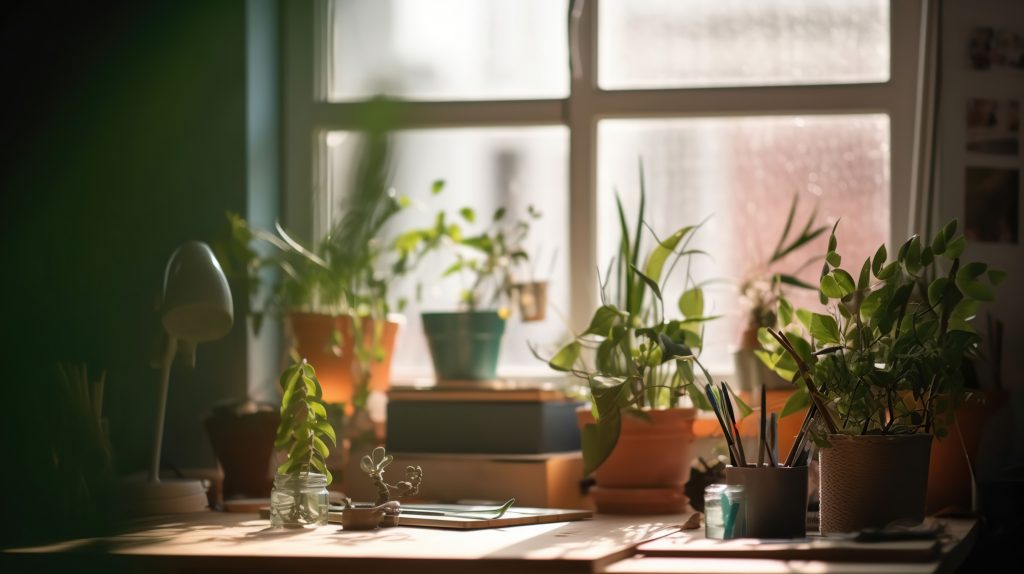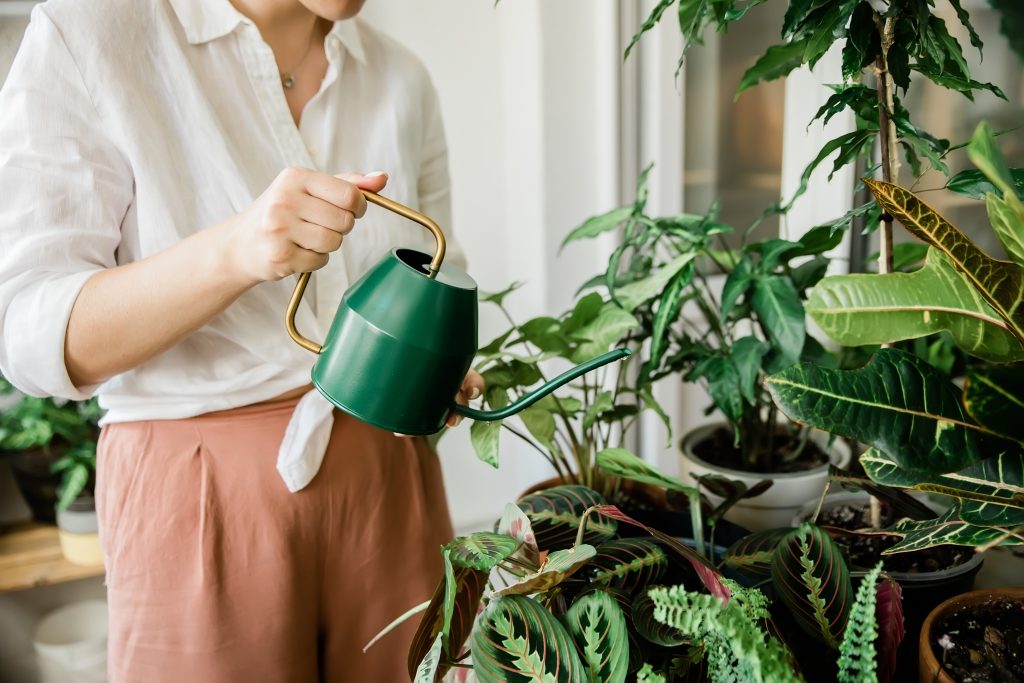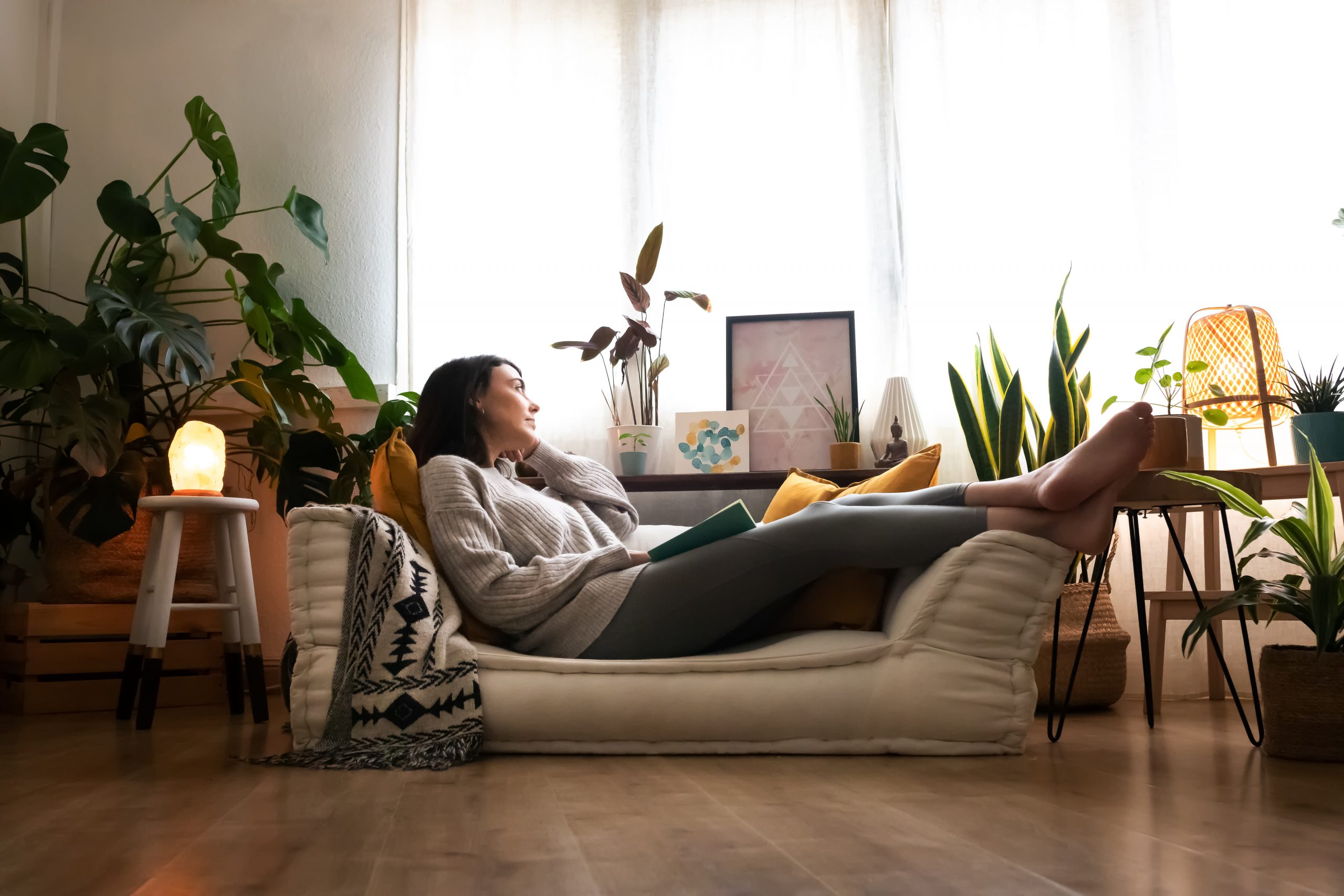Reading time: 7 minutes
Have you ever paused next to a plant-filled window and felt a deep breath come easier? Or maybe you’ve stepped into a garden and instantly felt grounded? That peace isn’t just in your head, it’s backed by science. Bringing greenery into your home is more than just a visual upgrade; it’s a quiet, consistent form of mental support. In this post, we’ll explore how plant-filled spaces can become a sanctuary for your mind, and how you can start creating one today.
How Plants Calm Us (Yes, It’s Proven)

Less Stress, More Breathing Room
Let’s start with stress. Studies show that interacting with plants significantly reduces cortisol, the hormone tied to stress. In a 2015 study published in the Journal of Physiological Anthropology, participants who repotted houseplants experienced lower stress levels compared to those doing computer tasks (Lee et al., 2015). Even simply being near greenery can lower heart rate and blood pressure.
So, think of your leafy friends as gentle reminders to pause, breathe, and unwind.
Mood Boosters in Disguise
It gets better. According to the biophilia hypothesis, we’re naturally drawn to nature. This isn’t just philosophy, it’s biology. For example, a study in HortTechnology found that patients in hospital rooms with plants reported feeling more positive and less anxious (Park & Mattson, 2009).
This suggests that plants aren’t just for aesthetics. They lift our emotional state and offer comfort, especially for those dealing with loneliness or overwhelm.
Sharper Focus, Better Workdays
Feeling scatterbrained? You’re not alone. Research from the University of Exeter showed a 15% rise in productivity when offices added greenery (Knight & Haslam, 2010). Having plants nearby reduces mental fatigue and boosts memory and accuracy. So, even a small desk plant can support you during long study or work sessions.
Air Quality = Mental Clarity
Cleaner air means a clearer mind. According to NASA’s Clean Air Study, houseplants like snake plants, peace lilies, and pothos remove toxins such as formaldehyde and benzene from the air (Wolverton et al., 1989). This matters because VOCs (volatile organic compounds) can cause fatigue, headaches, and brain fog.
By purifying indoor air, plants support better sleep, increased energy, and sharper mental clarity.
The Power of Nurturing

Taking care of plants gives you a sense of purpose. It’s a quiet, nourishing habit. A 2020 study in Urban Forestry & Urban Greening found that plant care during COVID lockdowns helped reduce feelings of loneliness and improve self-worth (Soga et al., 2020). Watching a plant thrive under your care builds confidence, and gives you something positive to focus on.
Soulscaping: Planting with Intention
At Soulscapy by Vika, I see plants as emotional tools, not just accessories. I call this approach soulscaping: the intentional use of plants to elevate mood, restore calm, and build environments that support your mental health.
Here’s what that can look like:
- A feathery fern by your yoga mat for a grounding morning routine.
- A snake plant at your desk to help you stay sharp while working.
- A cluster of air-purifying plants in your bedroom for better rest and clarity.
In other words, it’s not just about placing plants around the house. It’s about designing energy flow, creating an indoor ecosystem where both you and your plants thrive together.
Wrap-Up: Let Green In
Plants aren’t just décor, they’re gentle therapists. They help us feel calm, think clearly, and breathe better. And the best part? You don’t need a jungle to start. A single pothos or aloe on your windowsill can kickstart this transformation.
So, if you’re feeling mentally scattered or emotionally drained, let green in. Let it anchor you.
Your turn:
What plant makes you feel grounded? I’d love to hear about it in the comments.
And if you’re ready to start soulscaping, check out these posts next:
👉 Indoor Plants: Cultivate a Joyful Home
👉 Tools for Healthy, Happy Indoor Plants
👉 10 Easy Indoor Plants You Won’t Kill in 2025


Leave a Reply